Abstract
The manner in which ice forms in lamellar suspensions of dielaidoylphosphatidylethanolamine, dielaidoylphosphatidylcholine, and dioleoylphosphatidylcholine in water depends strongly on the water fraction. For weight fractions between 15 and 9%, the freezing and melting temperatures are significantly depressed below 0 degree C. The ice exhibits a continuous melting transition spanning as much as 20 degrees C. When the water weight fraction is below 9%, ice never forms at temperatures as low as -40 degrees C. We show that when water contained in a lamellar lipid suspension freezes, the ice is not found between the bilayers; it exists as pools of crystalline ice in equilibrium with the bound water associated with the polar lipid headgroups. We have used this effect, together with the known chemical potential of ice, to measure hydration forces between lipid bilayers. We find exponentially decaying hydration repulsion when the bilayers are less than about 7 A apart. For larger separations, we find significant deviations from single exponential decay.
Full text
PDF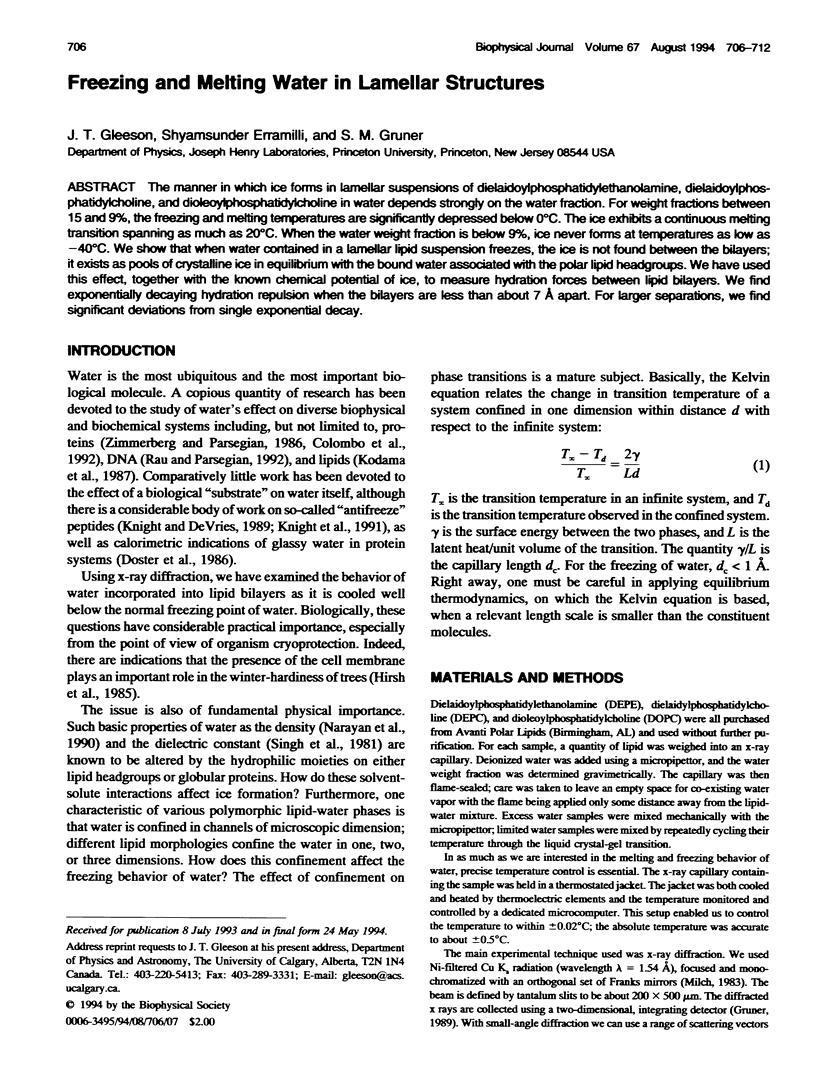
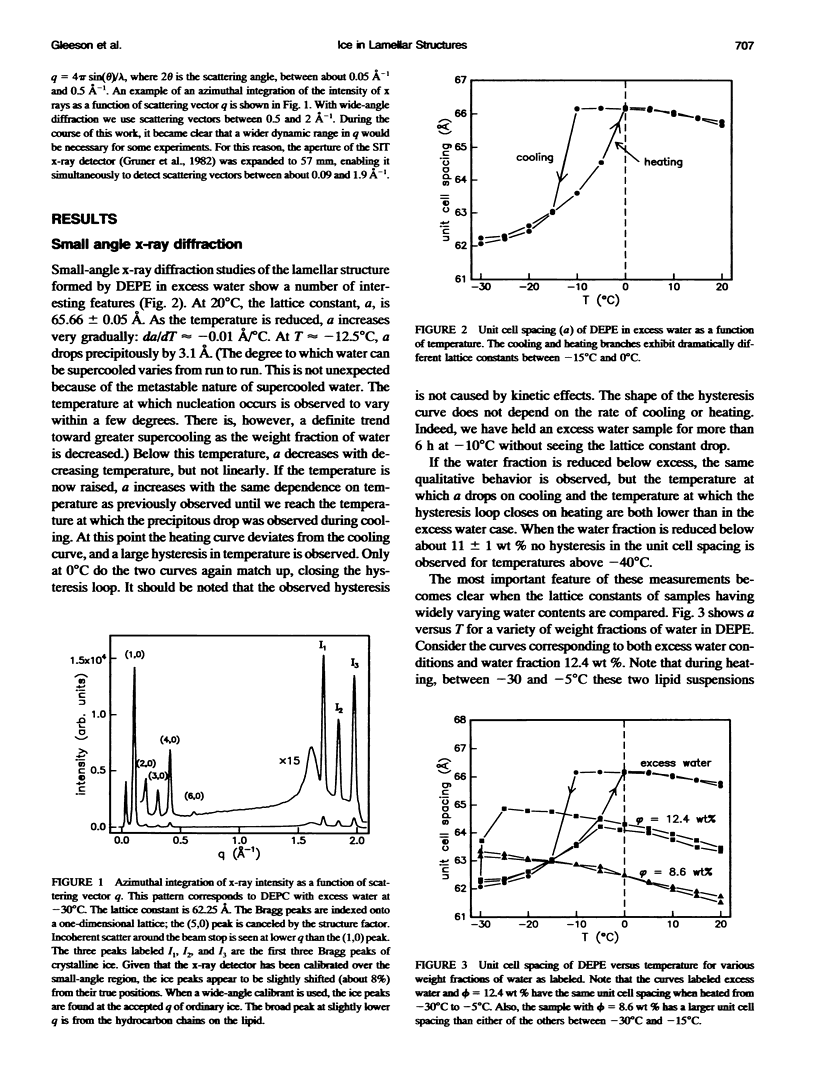
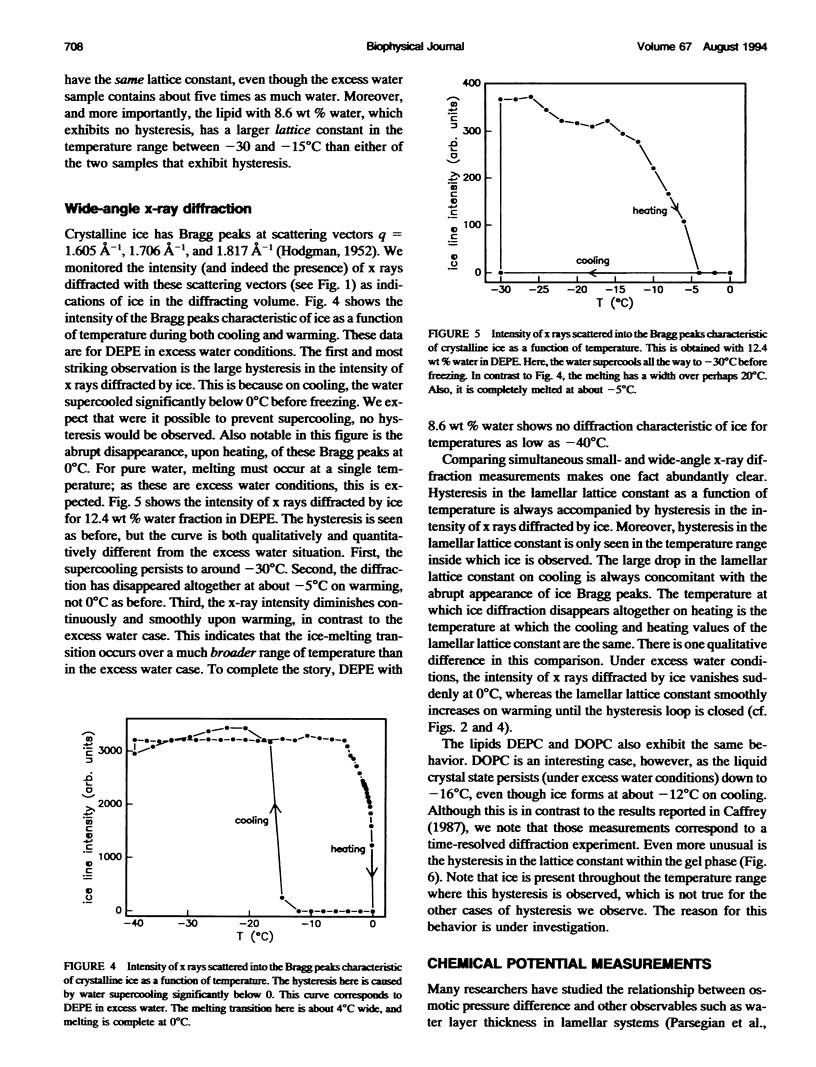
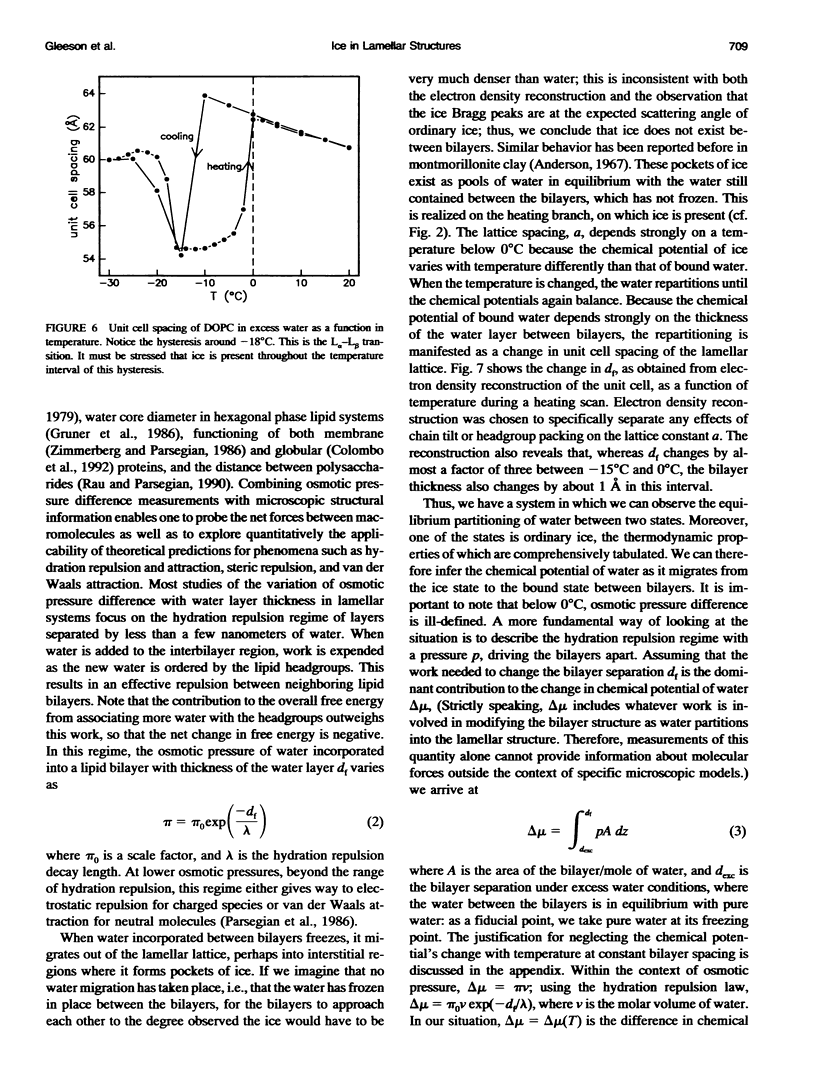
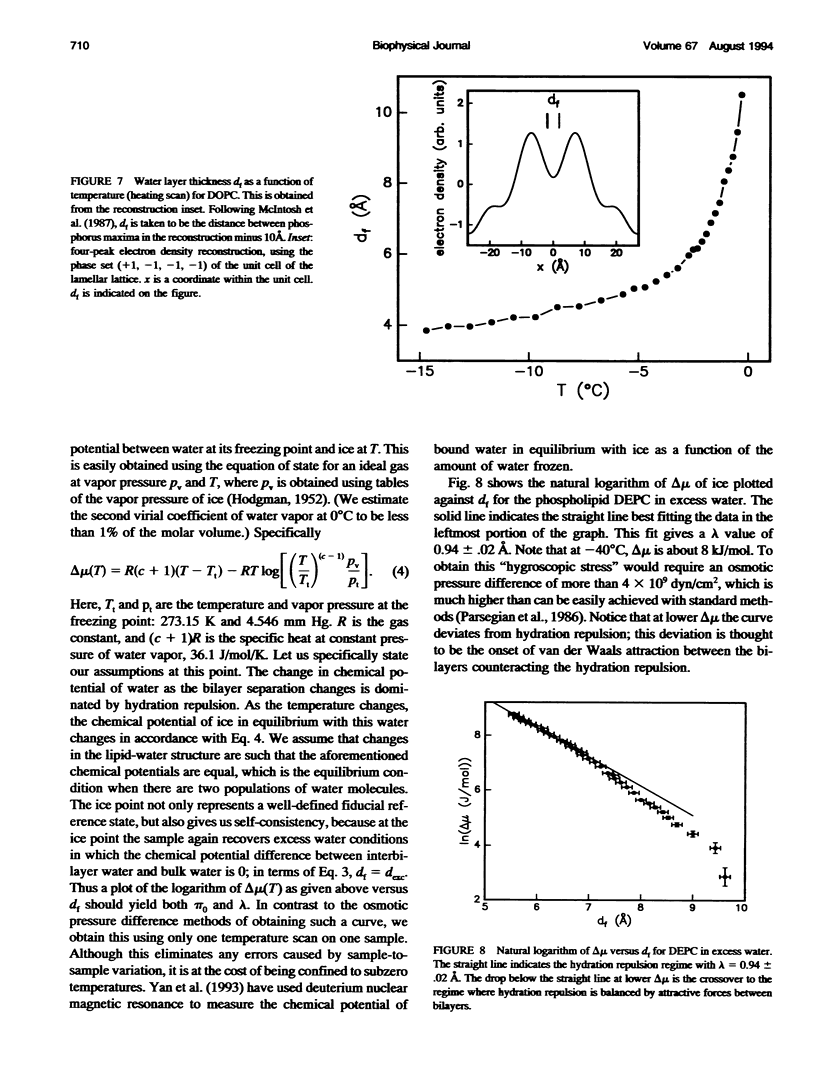
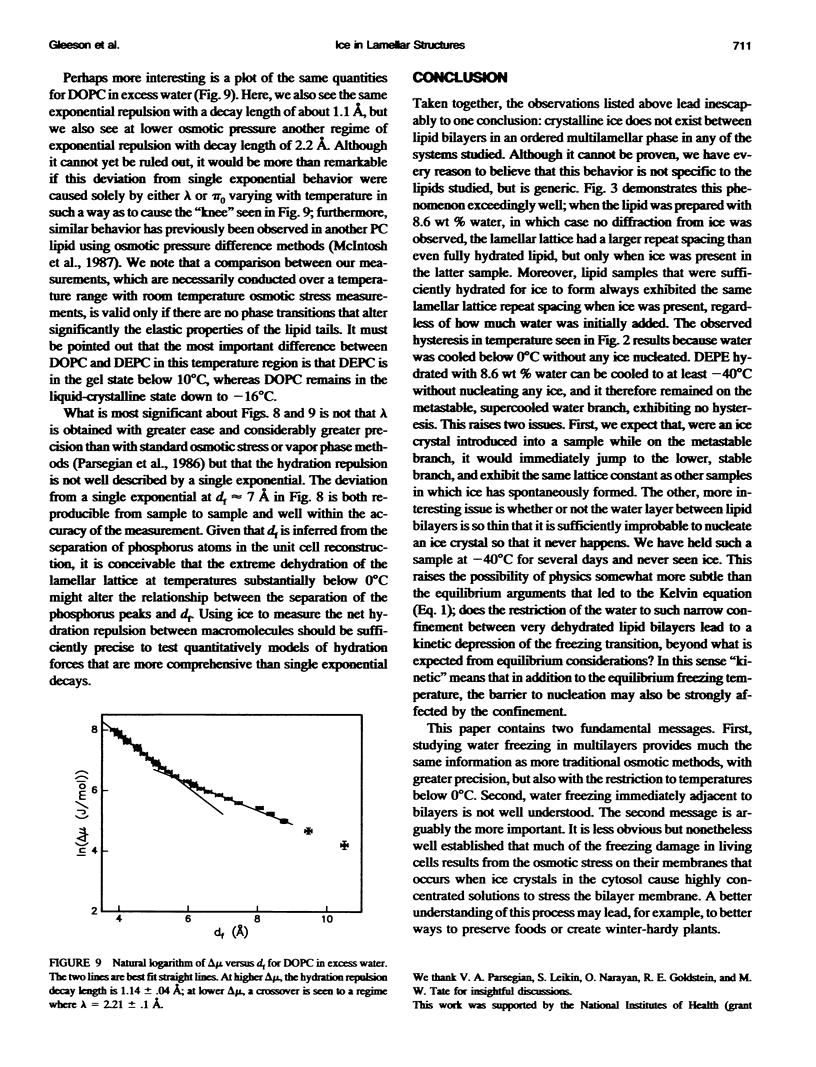
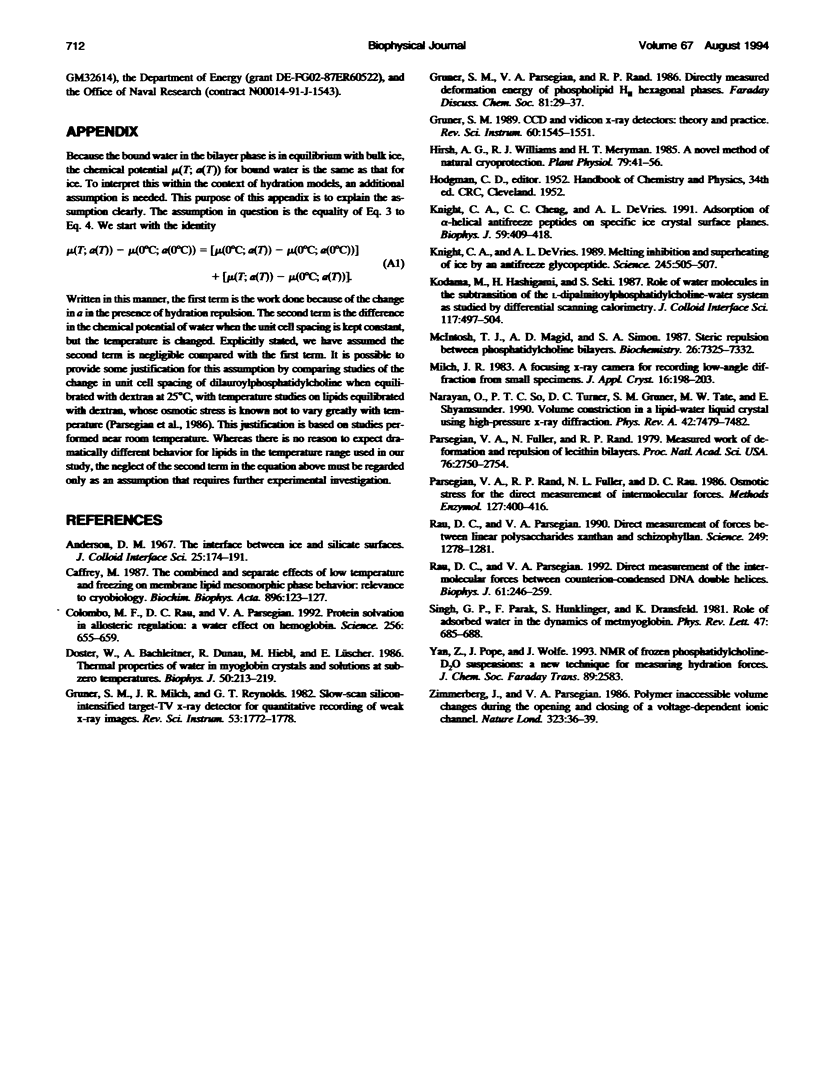
Selected References
These references are in PubMed. This may not be the complete list of references from this article.
- Knight C. A., Devries A. L. Melting inhibition and superheating of ice by an antifreeze glycopeptide. Science. 1989 Aug 4;245(4917):505–507. doi: 10.1126/science.245.4917.505. [DOI] [PubMed] [Google Scholar]
- Narayan O, So PT, Turner DC, Gruner SM, Tate MW, Shyamsunder E. Volume constriction in a lipid-water liquid crystal using high-pressure x-ray diffraction. Phys Rev A. 1990 Dec 15;42(12):7479–7482. doi: 10.1103/physreva.42.7479. [DOI] [PubMed] [Google Scholar]
- Zimmerberg J., Parsegian V. A. Polymer inaccessible volume changes during opening and closing of a voltage-dependent ionic channel. Nature. 1986 Sep 4;323(6083):36–39. doi: 10.1038/323036a0. [DOI] [PubMed] [Google Scholar]


